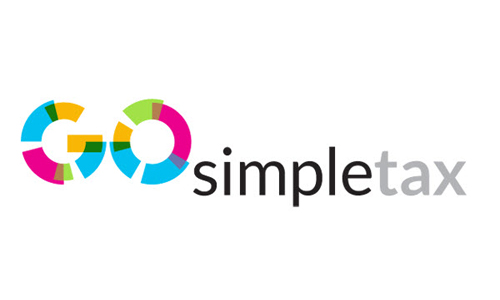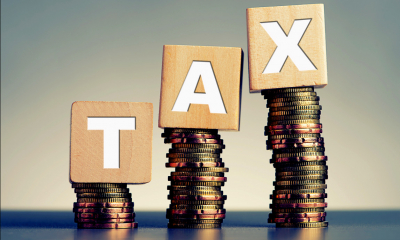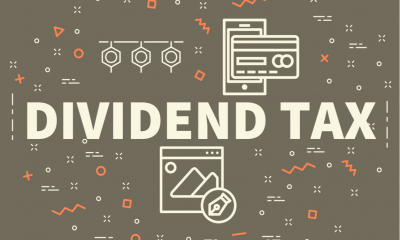
Knowing the important deadlines in the tax year 6 April 2024 to 5 April 2025 will help you to prepare and send off the main forms in good time. You may have a range of obligations for corporation tax, PAYE, self-assessment, VAT, National Insurance contributions (NICs) and the Companies House annual confirmation.
As well as preparing for the tax year end, you need to deal with a variety of regular payments and filings. When necessary, you should take professional advice.
Preparing for the tax year end
1. When does the tax year start and end?
The tax year 2024/25 starts on 6 April 2024.
The dates are deadlines by which the payments or forms must have been received by the relevant authority (eg HMRC). Or, in the case of reclaiming tax, the date by which your application must have been received.
You should register with HMRC for any online at least a week before any deadlines to allow time for the service to be activated. For an explanation of what each 'P' form covers, see P is for PAYE.
| April | |
|---|---|
| Submit your final Full Payment Submission and/or your Employer Payment Summary on or before your final pay period for the 2023/24 tax year (which ended 5 April 2024). | |
| Register with HMRC to use the "payrolling employees taxable benefits and expenses" service before the start of the tax year. | |
| 6 | Key tax changes come into effect including changes to income tax and National Insurance rates and thresholds. |
| 22 | PAYE and NICs for the month or quarter which ended on 5 April, paid to HMRC electronically (19 April if paid by post). |
| 30 | Automatic £100 penalty and additional daily £10 penalties start to be incurred if you have not filed your self-assessment tax return for year ending 5 April 2023. |
| May | |
|---|---|
| 3 | Form P46 (Car) to send to HMRC relating to the quarter ending 5 April 2024 (if there has been any change in the use of your company cars) for benefits not payrolled. |
| 31 | Give each employee who was employed by you a form P60. |
| Provide a letter to all employees with details of payrolled benefits. | |
| July | |
|---|---|
| 5 | Reach agreement with HMRC about the terms of any PAYE Settlement Agreement and the expenses covered for 2022/23. |
| 6 | Expenses and benefits forms P11D, P11D(b) submitted online to HMRC for benefits and expenses not payrolled such as living accommodation and beneficial loans Give a copy of the relevant form to each employee. |
| 6 | Submit form P11D(b) for Class 1A NICs on benefits regardless of whether payrolled or reported on P11D. |
| 6 | Deadline for submitting employee share scheme annual returns for 2023/24. |
| 19 | Pay any Class 1A NICs on taxable benefits and taxed award schemes to HMRC for 2023/24 electronically. |
| 31 | Second instalment of your self-assessed tax payment for the tax year to 5 April, sent to HMRC. |
| 31 | Late filing/payment penalty deadline. You will pay another £300 or a surcharge of 5% of the tax due (whichever is higher) if you have still not filed and paid your 2022/23 income tax. |
| August | |
|---|---|
| 2 | Form P46 (Car) relating to the first quarter ending 5 July (if there has been any change of use in your company cars) sent to HMRC (for benefits not payrolled). |
| October | |
|---|---|
| 5 | Registration deadline if you have any income which is not fully taxed or any capital gains tax liabilities for the 2023/24 tax year. |
| 19 | Income tax and National Insurance due under a voluntary PAYE Settlement Agreement, paid to HMRC electronically. |
| 31 | Self-assessment tax return for the year ended 5 April to be sent to HMRC if you want to submit a paper return. |
| November | |
|---|---|
| 2 | Form P46 (Car) relating to the quarter ending 5 October (if there has been any change in the use of your company cars), sent to HMRC (for benefits not payrolled ). |
| 30 | This is the last day to file your tax return online if you want HMRC to collect any underpayment automatically through your PAYE tax code. |
| December | |
|---|---|
| 31 | This is the last day to file your tax return online if you want HMRC to collect any underpayment automatically through your PAYE tax code. |
| January | |
|---|---|
| 31 | Self-assessment tax return for year ending 5 April 2024, submitted online to HMRC. |
| You have to pay a penalty of £100 if you fail to send in a tax return by this date. Additional penalties are incurred after three months. | |
| 31 | The first payment on account of your self-assessment tax for the tax year ending 5 April 2023/24 and the remaining unpaid balance of your self-assessment tax for the year ending 5 April 2022/23, paid to HMRC. |
| 31 | If you have not filed your 2022/23 self-assessment tax return, you will incur a further penalty of 5% of the tax due or £300 (whichever is greater). |
| February | |
|---|---|
| 2 | Form P46 (Car), relating to the quarter ending 5 January the previous year (if there has been any change in the use of your company cars), sent to HMRC for benefits not payrolled. |
| March | |
|---|---|
| 1 | If you have not paid the balance of your 2023/24 self-assessment tax bill, you will incur a penalty of 5% of the tax unpaid as well as interest charges. |
| An additional surcharge of 5% will be payable on any balance still unpaid on 31 July, and a further 5% on 31 January. | |

Want to file your self assessment tax return early?
If you’re self-employed, a sole trader or have income outside of PAYE, file your self-assessment direct to HMRC and get hints and tips on savings along the way. GoSimpleTax does all the calculations for you saving you ££s in accountancy fees.
Get a 25% discount with code NY23 and pay just £41.24
P is for PAYE
HMRC produces a number of 'P' forms. These are the ones you are likely to use.
| P11D | Complete this form for any benefits not reported via online payrolling. |
| P11D(b) | Complete this form totalling the benefits liable to Class 1A NICs regardless of whether payrolled or reported on form P11D |
| P45 | Give this form to employees when they leave your business. Make sure you ask for a P45 from every new employee. Starter and leaver information is now reported to HMRC via payroll. |
| P46 (Car) | Complete this form to record a change of car or a change in the details of car and fuel use by an employee if these benefits have not been payrolled. |
| P60 | Issue a copy of this to every employee, showing how much he or she has been paid for the previous tax year and how much tax and NI has been deducted. |
2. Preparing for the tax year end
Prepare well in advance for the end of the tax year (5 April)
- January is a good time to start collecting documents and compiling figures, in order to begin planning your future tax affairs.
Under self-assessment, 31 January is the deadline for claiming reliefs and allowances from HMRC over the previous four tax years.
- Get detailed advice from your accountant or tax adviser.
In March, consider making additional payments into your personal pension scheme
- This can help maximise the tax efficiency of your pension.
- You will receive tax relief at your marginal tax rate.
From 6 April, start getting ready to complete your self-assessment tax return
- Start collecting together all the relevant documents, such as your share vouchers and dividend documents.
Year-end decisions
There are a number of issues you should be considering as you near the end of your company's financial year.
There is flexibility over how you use any losses to reduce your corporation tax bills
- You need to decide when to claim these deductions from your tax bill, in order to minimise the tax you pay.
- For example, if you have made a small profit in the most recent tax year, but expect to make substantially bigger profits in the next year, you could choose not to carry back a loss in the current year. More tax may be saved by carrying the loss forward.
Purchase any expensive equipment before the end of your company's financial year
- This is a tax-efficient practice, because you will be able to make deductions against tax more quickly than if you make the purchase after the year end.
3. Compulsory online filing
Almost all employers need to file PAYE information online in real time
- You must submit a Full Payment Submission (FPS) every time you pay employees. This must include how much each employee has been paid, details of deductions made such as tax and NICs and start and leave dates (if applicable).
- Depending on your circumstances, you may need to submit other information and submissions online to HMRC.
Almost all VAT-registered businesses must file VAT returns online
- You must also pay VAT electronically and comply with Making Tax Digital rules.
Company tax returns must be filed online
- Accounts and computations must be submitted in eXtensible Markup Language (XML). You (or your agent) must use software that can do this.
- Any corporation tax that is due must be paid electronically.
The easiest way to file forms online is to register for HMRC online services
- You can also file online using some commercial software packages. Check whether the package you use has an online filing function.
- Alternatively, you could use an agent or bureau to file forms online on your behalf.
The deadline for the Government Making Tax Digital for income tax has been delayed until April 2026.
- All small businesses and self-employed people will be required to use Digital Tax Accounts to report their tax quarterly.
- All VAT-registered businesses (regardless of turnover) are now required to submit digital VAT returns and follow Making Tax digital rules.
- Making Tax Digital for Corporation Tax is not expected before April 2026.
4. Regular payments and filings
PAYE, student loan deductions and National Insurance payments must be made every month
- Payments are for the previous month unless you are paying quarterly.
- Electronic payments must be made by the 22nd (the previous day if the 22nd falls on a weekend or a holiday). Postal or bank payments are due by 19th of the month.
VAT is paid monthly, quarterly or yearly
- It is usually paid quarterly, electronically, seven days after the end of the month following the quarter in question.
Corporation tax must usually be paid within nine months and one day of the company year end
- So if your tax year ends on 30 November, you must pay corporation tax by 1 September the following year. Special arrangements apply to companies whose accounting period is other than 12 months.
Companies with profits of more than £1.5 million pay their corporation tax quarterly
- The first instalment is due six months and 13 days after the start of the company's accounting period, and the others follow at three-monthly intervals.
- For example, a company with a financial year starting on 1 January 2023 would make payments on 14 July and 14 October, with a further payment on 14 January 2024 and the final payment on 14 April 2024.
Companies must file accounts with Companies House
- Private companies must do this within nine months of the end of their financial year
- For public companies, the period is six months.
All companies must file corporation tax self-assessment returns with HMRC
- The deadline is 12 months from the end of their accounting periods.
All companies must file a confirmation statement each year
- This is usually due on the anniversary of the date of incorporation.
- It includes a list of directors, company secretary (if any), the registered office, the share capital and the shareholders.
- A £40 processing fee (£12 if filed online) is payable to Companies House.
Various notifications must be given when share options are granted or exercised
Signpost
- Register for HMRC online services.
- Find an ICAEW chartered accountant, an ACCA accountancy firm, an ICAS chartered accountant or a CIMA management accountant for accounting and tax advice.
- Find a chartered tax adviser belonging to the Chartered Institute of Taxation (020 7340 0550).
- Make a corporation tax enquiry to HMRC (0300 200 3410).
- Make a self-assessment enquiry to HMRC (0300 200 3310).
- Make a PAYE enquiry to HMRC (0300 200 3200).
- Make a VAT enquiry to HMRC (0300 200 3700).
- Find guidance for companies from Companies House (0303 1234 500).
Expert quote
"You must notify HM Revenue & Customs within 92 days of share options being granted or exercised in an approved scheme." - Jonathan Penn, Baker Tilly


